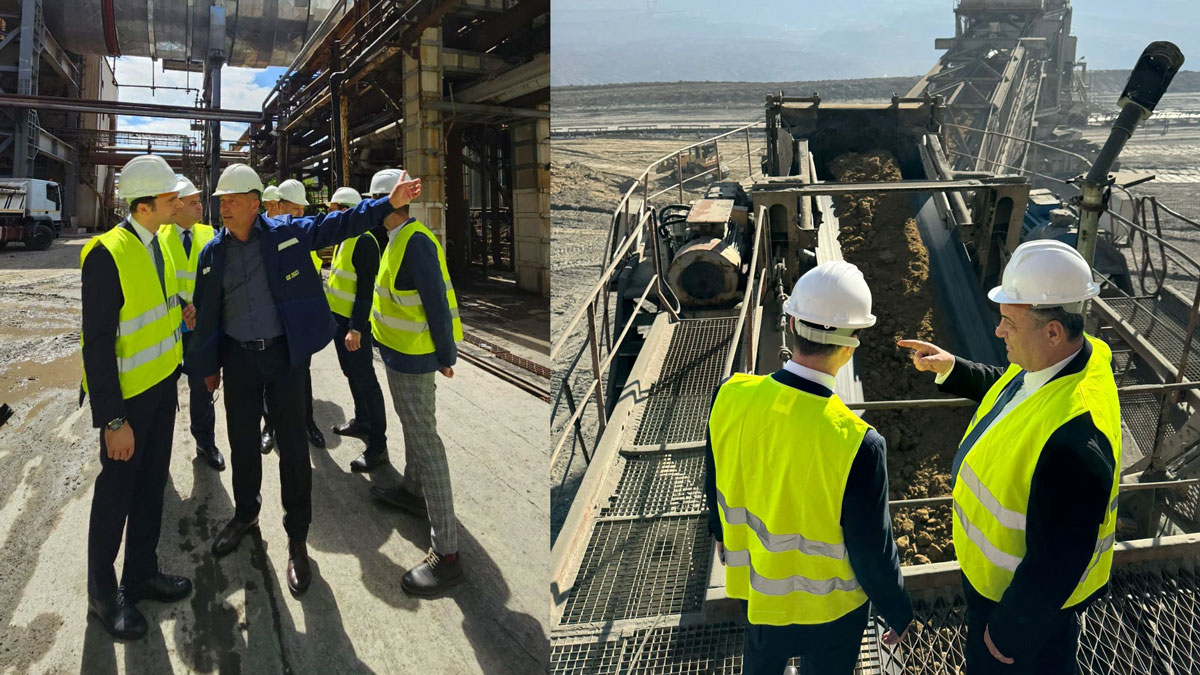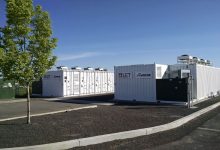Inauguration of Group 5, Rovinari Thermal Power Plant
Coal in Romania’s Energy Transition
Inauguration of Group 5 at the Rovinari Thermal Power Plant, in Gorj County, represents a significant investment in Romania’s energy sector, highlighting the continued role of coal-fired energy in the context of the energy transition.
This initiative comes at a critical moment for Europe, as Germany and Poland, along with other European countries, navigate the challenges of the transition from fossil fuels to more sustainable energy sources. Moreover, China’s investment in this sector underlines the complexity of the region’s economic and geopolitical interactions as each country defines its energy security strategies.
Romania under pressure to support the green transition
Energy Minister Sebastian Burduja’s speech highlights an important reality: Romania is under pressure to support the green transition, but this change cannot be made abruptly without affecting national energy security.
Unlike Western European countries, which have more advanced renewable energy capacities, Romania is dependent on conventional sources, such as coal, which still play an important role in powering the national energy system. Group 5 at Rovinari, recently upgraded with a major investment, is an example of a pragmatic approach: improving efficiency and reducing environmental impact to ensure continuity in a period of transition.
“In just four years we have gone from two excavators to eight, and the extraction capacity has reached 3 million tons of coal per year. During my term of office, I have ensured a work area in all careers through 10 government decisions adopted. I wanted to go to Rosia Quarry to see the working conditions, I went on the excavator 03, I talked to the people, and I was glad to meet many young people. The driver of the excavator, Alex, aged 24, told me that all he wants is not to leave the country,” said the Energy Minister after visiting the Rosia Quarry, operated by Complexul Energetic Oltenia, the largest in South-East Europe.
European context: Germany and Poland remain major coal users
Amid a protracted energy crisis, especially after limiting access to energy resources from Russia, Germany and Poland have adopted complex policies to balance their energy supply and demand. Germany, in particular, has faced big pressures to cut carbon emissions, following an ambitious plan to eliminate coal from its energy mix by 2038. However, despite this promise, recent events have forced the country to postpone the closure of a number of coal-fired power plants, especially in the face of increased energy demands and the Ukraine crisis. Poland also remains a major coal user in Europe, arguing that its energy security is of crucial importance and continuing to support the coal industry.
For both countries, coal remains a key source as they invest in energy transition projects such as developing renewable energy, carbon capture technology and expanding energy storage infrastructure. However, these investments require considerable time and money, which is why coal-fired power plants are still used as a safety measure.
China’s involvement in Europe
China has become a major player in the global energy sector, investing heavily in projects in Central and Eastern Europe, including renewable energy, but also in conventional infrastructure such as natural gas and coal. It has developed a strong economic presence in the region through the Belt and Road Initiative and other strategic investment projects. In Poland, for example, Chinese companies have shown a keen interest in energy infrastructure and coal-fired power plant modernization projects, providing access to capital and modernized technology. This involvement raises questions among European leaders concerned about economic dependence and security risks associated with foreign investment in critical infrastructure.
On the other hand, Chinese investment brings a significant source of financing at a time when European funds for upgrading conventional energy infrastructure are limited due to the prioritization of green projects. Therefore, Romania and other Central and Eastern European countries could be tempted to work with China to ensure their energy security in the short term, until long-term sustainable solutions are found.
Outlook and challenges
In the energy transition, Romania and other European countries will continue to face challenges related to coal dependency.
Minister Burduja underlines the need for a restructuring plan to prolong the operation of coal-fired power plants and to demonstrate to the European Commission that Romania’s energy security remains a key priority. This view is also shared by Germany and Poland, where political leaders argue that a rapid transition without the provision of alternative stable sources could jeopardize economic and social stability.
Thus, Group 5 of Rovinari Thermal Power Plant becomes more than just a local investment. It is a symbol of the struggle to balance the need to reduce carbon emissions with the urgent need for energy security. It is also a statement on how to implement Romania’s strategy to remain flexible and pragmatic in a changing international energy landscape.
Group 5 at Rovinari and similar projects in Central Europe highlight not only the efforts to pave the way towards a low-carbon future, but also the complexity of the economic and strategic decisions in this area. They are influenced by a combination of internal and external pressures – from EU regulations to investment opportunities in China – that will define the region’s energy future for decades to come.







